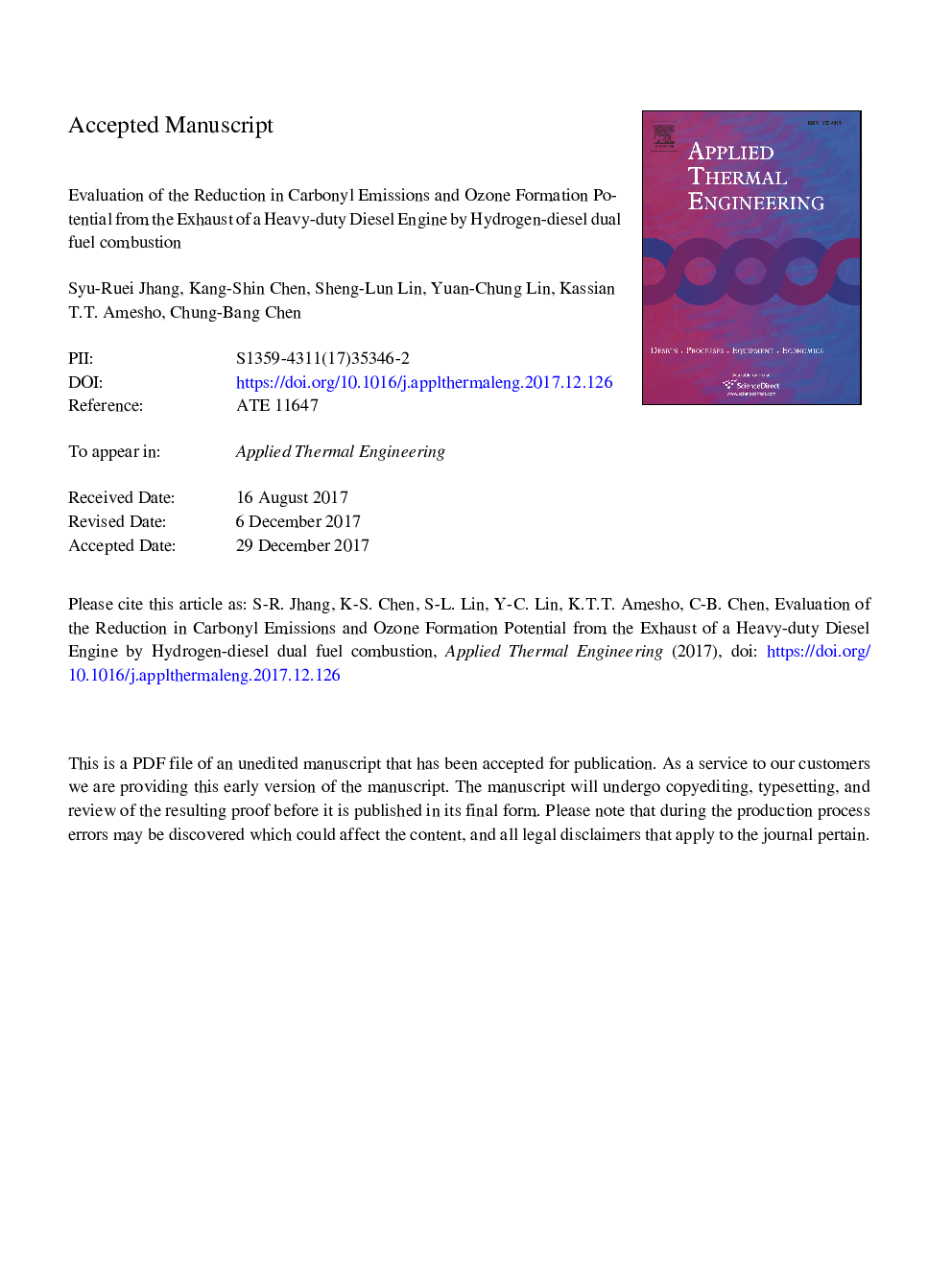| Article ID | Journal | Published Year | Pages | File Type |
|---|---|---|---|---|
| 7046092 | Applied Thermal Engineering | 2018 | 34 Pages |
Abstract
In this study, diesel engine was fueled by multi-fuels, including conventional diesel and 0, 0.6 and 1.2â¯vol% hydrogen and operated at low to high engine loads. Low molecular weight carbonyls, such as formaldehyde, acetaldehyde, and acetone, contributed 79.2-87.2% of total carbonyl compounds which are the more prominent when the engine operated at low load. With 0.6 and 1.2â¯vol% of hydrogen addition, formaldehyde decreased 10.4-10.9% at idling condition. As the load increases 25, 50 and 75%, the formaldehyde decreased by 2.93-25.1, 5.91-25.8 and 2.28-40.5%, respectively. The same reduction phenomenon can also be observed from acrolein, acetone, propionaldehyde, crotonaldehyde and 2-butanone & butyraldehyde emissions. The highest ozone-formation potential (OFP) from multi-pollution emissions was found at idling operation. The high OFP could be reduced by increasing hydrogen additions and eventually approached the lowest level with 1.2â¯vol% hydrogen addition at middle to high engine load. Nevertheless, the diesel engine with hydrogen addition could reduce a certain amount of CBC emission and OFP at engine idling operation.
Related Topics
Physical Sciences and Engineering
Chemical Engineering
Fluid Flow and Transfer Processes
Authors
Syu-Ruei Jhang, Kang-Shin Chen, Sheng-Lun Lin, Yuan-Chung Lin, Kassian T.T. Amesho, Chung-Bang Chen,
